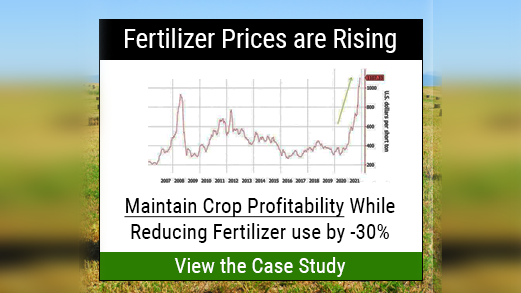Water Concerns Spark New Tools for An Evolving Ag Landscape

Drought. Changing climate and weather patterns. Competition for precious water resources. New regulations. Increased pressure from consumers and the food supply chain around sustainability. With all of these factors in play for growers, making optimal water decisions is more critical — but also more challenging — than ever. Technology developments, enhanced tools for using data, and entirely different approaches to dealing with abiotic conditions like water stress are giving growers options as using water more efficiently and effectively becomes a top priority for agriculture.
All of these issues are impacting growers today, says Al Klapp, Market Development Manager for Valagro.
“When I think about water issues, my mind immediately goes to California. As an industry, we’ve been dealing with a multi-year drought. We’ve been getting some rain lately, but it is still probably not enough to replenish reservoirs and groundwater needed to support agriculture and the municipal requirements of a growing population, particularly in drought years — which seems to be most years now. I think that’s going to be exacerbated a little bit by the Sustainable Groundwater Management Act (SGMA) as that starts to roll out in California. We’ll see that groundwater piece become more and more important,” he says. “It’s pretty clear there isn’t enough water, and we need to use it better.”
Pressures from the market are impacting water decisions as well.
“The sustainability expectations are only going to become a bigger motivation for growers,” Klapp adds. “That’s driven right now from consumers, and it’s starting to trickle down to the packing houses and processing companies, and ultimately that’s going to start to move down to the grower level. I’m already seeing that happen in wine grapes. We’re at a point with sustainability that it’s a regular question that we get during conversations with growers and retailers, and I expect that emphasis is only going to increase in the future.”
Advances in Sensors and Data
Given these pressures on the availability and cost of water resources, the knee-jerk reaction for any grower might logically be, “How do I produce a crop using less water?” But that’s the wrong question to ask, says Bruce Moeller, CEO of AquaSpy.
“I always tell people, if you want to save water, don’t grow a crop,” he says. “If you’re growing a crop, you should have a strategy. And that strategy, like most things in life, is either quantity or quality.”
Those quality or quantity decisions around water are unique to every grower and include all the variables of resources, market conditions, weather, and more.
“If you’ve got a commodity crop and commodity prices are up, you want as much quantity as you can. Or maybe you’re growing a specific specialty crop that has to have certain attributes, like a specific size, or water content, or taste that you can affect through process control, with water being the key ingredient,” Moeller continues.
The key for either strategy, he says, is using water as a precise tool.
For more, continue reading the full article featured as part of our special Global Insight Series report on Water, Technology and Sustainability. In addition, check out the previous reports in Meister’s Global Insight Series covering a range of topics from Biological Crop Protection to Irrigation Innovations to Agricultural Technology.









